10 Ship Terms And Definitions Even Smart People Misuse
Ship terms related to the nautical industry are often misunderstood by the people outside of the industry and those who are part of it. Such misunderstanding of terms or definitions can lead to confusion among people, resulting in accident, loss or sheer embarrassment.
A number of these ship terms are very commonly used and spoken of; however, the fact remains that the true meaning of a number of them is still not fully understood by even the smartest people.
Let’s look at some of the most commonly misused and misunderstood ship terms and definitions. (Please do note that this is not an exhaustive list of misunderstood words used on ships, but the important ones, we felt, need to be addressed.)
1. Weathertight Doors And Watertight Doors
These ship terms might not be very famous among people outside the industry but are well known among maritime professionals.
The key difference between these two doors on ships is the location of their siting.
Weathertight Doors are primarily located above the waterline of the vessel. They are designed to prevent the ingress of water from outside to inside. This generally includes a small head of water. Their main use is to prevent the ingress of green seas into the space of the ship they are designed to protect. Most of the doors on deck/accommodation on tanker ships are weathertight doors. These doors are designed to open outwards, thereby ensuring a positive pressure should a draught of water act on them.


On the other hand, watertight doors are designed to prevent water ingress from both sides, thereby ensuring that the watertight integrity of the neighbouring compartment of the ship is not lost. Watertight doors are located below deck level and are designed to open and close upwards or sidewards (usually by automatic means). Most of the doors on car carrier vessels and Ro-Ro decks are watertight. A remote indication of the status (open / close) of watertight doors is required by regulations.


2. Gross Tonnage and Net Tonnage
Some ship terms and definitions, though commonly famous in day-to-day life, are often misused on ships.
Gross Tonnage is the volume of all enclosed spaces on a ship. This includes the Engine Room and other non- cargo spaces as well. The tonnage is calculated by a complex formula that is not within this article’s scope. Most Maritime Regulations (SOLAS, MARPOL etc.) apply to ships based on their Gross Tonnage.
Net Tonnage, on the other hand, is the volume of only the cargo carrying spaces on the ship. This is the tonnage that determines the earning capability of the vessel. Most port/anchorage dues apply to ships based on their Net Tonnage.
Note:
- Gross and Net Tonnage should not be confused with Suez Canal Tonnage, which uses a slightly different formula to calculate the toll for transiting the canal.
- Gross Tonnage (GT) and Net Tonnage (NT) should not be confused with Gross Registered Tonnage (GRT) and Net Registered Tonnage (NRT). One still finds the occasional old seafarer referring to tonnage as GRT and NRT. GRT and NRT were used before the IMO Convention – International Convention on Tonnage Measurement of Ships (1969). Both are now obsolete terms. GT and NT replaced them in 1994 in line with the convention.
3. Gulf and Bay
The world’s waterbodies are divided into Oceans, Seas, Gulfs, Bays, Rivers, Estuaries, Lakes, Straits, Canals etc. Most of these are self-explanatory. However, most people fail to understand the difference between Gulf and Bay and Straits, Channels and Canals.
By definition, Gulf is a large waterbody which can sometimes be considered as an extended arm of a sea with a constricted entrance along a strait. A gulf is almost entirely enclosed by land.
E.g. the Persian Gulf, the Gulf of Mexico, the Gulf of Finland
Bay is similar to a Gulf but generally smaller in size and has a wider entrance. However, there are exceptions to this definition. E.g. the Bay of Bengal is much larger than most of the bays of the world. Also, a Bay is not enclosed by land to a large extent.
E.g., the Bay of Biscay, Bay of Bengal.

4. Straits, Channels And Canals
Strait is a narrow water-body interconnecting two much larger water bodies (Eg. Singapore and Malacca Straits connect the Bay of Bengal and the South China Sea). Water flow is in both directions and is tidal. Most importantly, straits are naturally formed without human intervention.
E.g. Singapore Straits, Sunda Straits, Lombok straits, Straits of Hormuz, Bosporus Straits, and Straits of Gibraltar.

Channels can be defined as wider Straits. They have the same characteristics as the Straits, only that they are bigger and have more navigable water.
E.g. English Channel, Mozambique Channel,
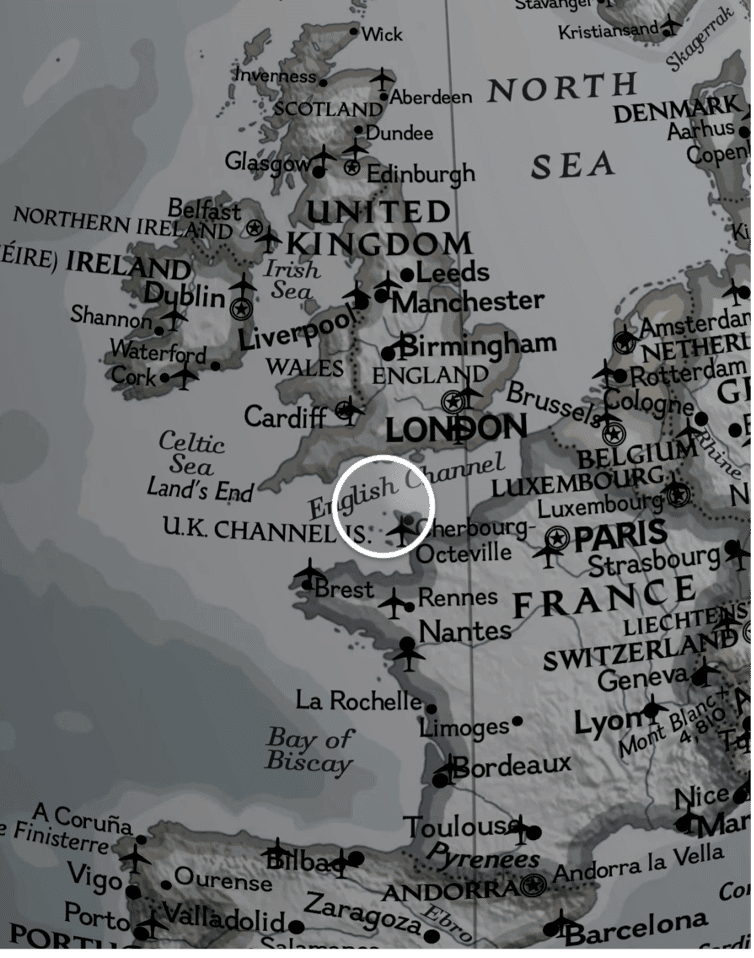
Canals are defined as man-made straits. It is an artificial waterway to facilitate trade between otherwise dangerous routes or cut short distances between natural routes.
E.g. Suez Canal, Panama Canal, Kiel Canal.

5. Density and Specific Gravity
These ship terms are more to do with Tanker Officers and Crew.

Density, by definition, is the amount of matter per unit of volume. Or, more simply, mass over volume. Hence it has units of kg/cm3.
E.g. the Density of Sea Water is approx. 1025 kg/m3
Specific Gravity is a ratio of the density of the substance divided by some reference material, typically Fresh Water. The units cancel each other out, often referred to as a ration.
For E.g. the Specific Gravity of Diesel Oil is 0.86
Density and Specific Gravity are the same if the reference material is Fresh Water since the Density of Fresh Water is 1.0 kg/cm3.
6. Fairleads, Chocks, Bitts, Bollards, Bilge And Dolphins
Fairleads, Chocks, Bitts, Bollards, Dolphins etc., are commonly used ship terms in mooring operations of vessels.

Fairleads: are welded directly onto the ship’s hull structure. Fairleads have a roller attached to them to guide mooring wires to winches for the correct lead. Pedestal Fairleads are commonly found on modern-day ships to guide mooring lines between the chock and the winch. Universal Fairleads have widely used ships earlier in lieu of chocks.

Chocks are structural reinforcements on ships which guide the mooring lines to and from the shore / other vessels. Chocks need to be much higher SWL than the mooring line to avoid structural damage and withstand various forces when a vessel is moored.

Bollards: are generally referred to as short posts on the quay/jetty used to secure Ship’s Mooring Lines. A single bitt on ships may also be referred to as a bollard around which the eye of the rope is attached. Oil Tankers have special bollards in the various areas called cruciform bollards, which are used for securing/supporting flexible hoses for cargo operations.


Bitts: are double bollards/posts mounted vertically on ships to secure mooring lines from other vessels (during STS operations), tug lines or secure Fire Wires on Tankers. Bitts are always found in pairs. It is important to inform the pilot or tug operator of the SWL of the bitts to ensure that the tug does not exceed this force when pulling the vessel.

Dolphins: They are found only ashore. These are independent platforms on the jetty with hooks or bollards for securing the ship’s mooring lines.
Bilge: The lowest compartment of a ship or boat is called the bilge.
7. Derricks And Cranes
Derricks and Cranes are both ship terms related to lifting appliances. Derricks are now relics of the past and found only on a few older ships. They have been replaced by the more versatile and much simpler Deck Crane.
Derricks are lifting devices composed of one or more guy masts (supporting members). A derrick is controlled by several lines connected to the top of the mast, which controls the lateral and vertical motion of the derrick. The runner-up/down function to lift and lower a load is accomplished by a separate line similar to a crane.
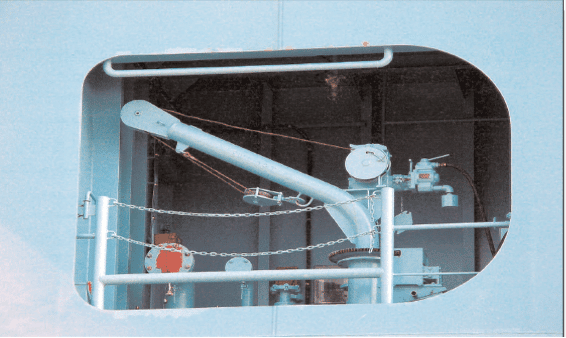
The most popular derrick on ships is the Union Purchase Rig, which uses two derricks, enabling the operators to load and discharge cargo much faster than single derricks.
One of the major disadvantages of the Derrick is that it takes longer to change the rig to suit different cargo types and lifts. The operation of derricks also requires at least two winch operators.
Cranes are similar to derricks but are much simpler in operation. A single crane driver accomplishes all functions – Runner up / down, Boom Up / Down, Swinging sidewards, etc. Most shipboard cranes are designed to swing through 360 degrees but may also have safety limit switches which prevent cranes from operating at angles which can cause damage to structures. Limit switches are also provided to prevent the runner wire from reaching the end of the drum.
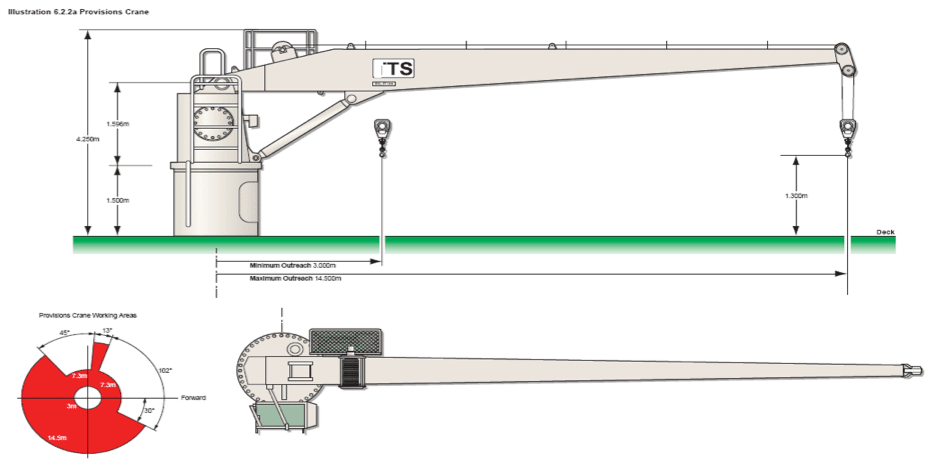
8. Swinging Circle And Turning Circle
Swinging and Turning Circles – ship terms related to vessel navigation are often confused.
Swinging Circle is a shipping term used when the vessel is at anchor. This is the theoretical radius in which the ship is expected to swing at anchor. The radius of the swinging circle is generally calculated as (Number of Shackles x 27.5 m + Length of the Ship in meters). After anchoring, the watch officer (OOW) should ensure that the vessel remains within the Swinging Circle and that no other vessel anchors within the vessel’s swinging circle, plus some safety distance as decided by the Master. The swinging circle is not fixed and depends on the number of shackles paid out.
Turning Circle is part of the vessel’s manoeuvring characteristics. It is the diameter circumscribed by the vessel when the rudder is put hard over when going full ahead. This shipping term is generally determined during the vessel’s sea trials before delivery. The yard will provide details of the turning circles in Loaded and Ballast Conditions for shallow and deep waters. Turning circles are posted on the bridge and included in the Wheelhouse Poster, and one need not calculate the turning process each time and for different conditions.
9. Gangway And Accommodation Ladders
These are still the two most often interchanged ship terms used on vessels. Although, their purpose is the same. i.e. to serve as a link/bridge between the ship and the shore, their rigging and usage are different.
Gangways are rigged at right angles to the fore and aft line of the ship. Gangways should not be used at an angle of inclination greater than 30 degrees to the horizontal. Gangways are mandatory for ships over 30 meters in length. Gangways must only be rigged on railings that are reinforced for this purpose.
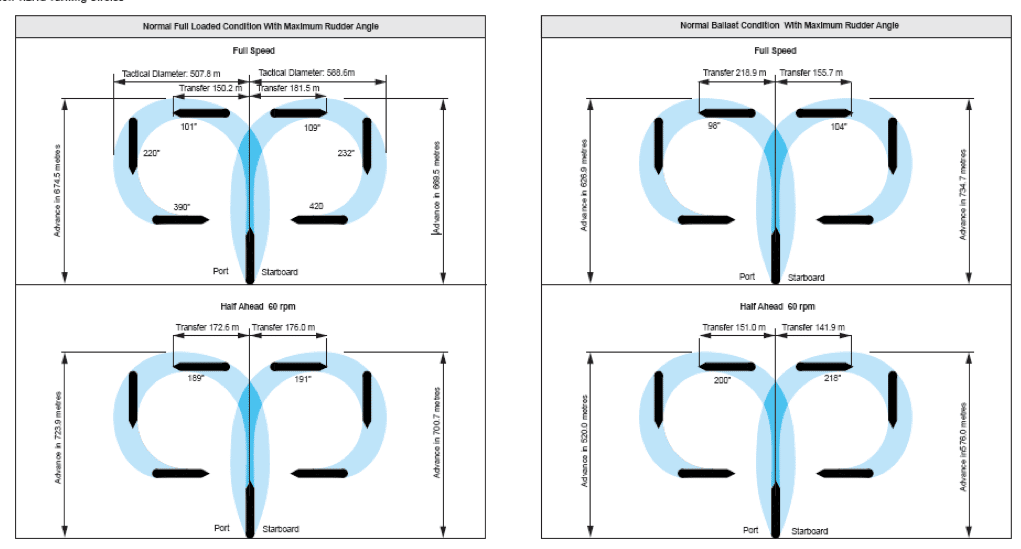
Accommodation Ladders are rigged in the fore and aft direction of the ship and face astern. The maximum angle of inclination from the horizontal shall not exceed 55 degrees. Accommodation ladders are generally fixed on the vessel and are swung out using dedicated winches and motors. These are mandatory for vessels over 120 meters in length.
10. Annex, Code, Convention And Protocol
The above stand out as the most confusing among the myriads of ship terms and definitions. Let us look at what each one stands for.
The convention is a formal treaty between signatory states to comply with various aspects governed by the agreement, which forms the basis of the treaty. IMO must first adopt conventions before member states can ratify them.
E.g. SOLAS Convention, MARPOL Convention, Loadline Convention, Maritime Labour Convention etc.
In merchant shipping, a Convention is binding on all member states only if it has formally been adopted by IMO and then ratified by member states. The rules for adopting conventions (tacit and active acceptance) are not in the scope of this article.
Protocol: A protocol is a supplementary treaty which modifies a Convention. It is a treaty that supplements or adds to a pre-existing convention. Instead of bringing out a new convention altogether, it is easier to enhance the convention using a protocol.
E.g. MARPOL 73/78 stands for The International Convention for the Prevention of Pollution from Ships which was formalised in 1973 and modified by the Protocol of 1978. The combined convention did not come into force until 1983 due to a lack of ratifications.
Code: A Code is part of a Convention and contains various technical details of essential aspects of the Convention. In other words, a code assists in elaborating the contents of the convention. It forms a part of a convention and cannot exist as a standalone regulation.
E.g., the ISPS Code (International Ship and Port Facility Security Code) is part of the SOLAS convention, and LSA and FSS Codes also form parts of the same conventions.
Annexe: An Annex is also a part of a convention which is introduced after the convention has been formalised. An annexe to a convention adopted by IMO has to be separately ratified by the member states to become legally binding on all member states.
E.g., MARPOL presently has six annexes, all of which have been ratified by member states at various intervals since the convention first came into force.
Frequently Asked Questions
1. What are ship terminologies?
Ship terminologies are technical terms used by people in the shipping industry. Common terms include keel, tiller, starboard side, pier, hatch, dock, helm, valve, bow, beam, draft, freeboard, knots, nautical miles and so on.
2. What do you mean by sea room?
The word does not mean a specific room onboard a vessel. Instead, it describes a safe distance from the shore or other hazards.
3. What is the use of a sea anchor?
It acts as a stabilising tool which is thrown into the water. It is held at the seabed and acts as a brake. It keeps the hull in line with strong winds and perpendicular to the waves.
4. What are a galley and a gangway?
Galley refers to the kitchen area onboard a vessel, laid out longitudinally with overhead cabinets. A gangway is a narrow walkway or platform used for embarking or disembarking the vessel.
5. What is a toe rail?
A toe rail is a boat fitting to prevent crew members from falling into the water. It serves a safety purpose and also has drain holes and pipes.
You might also like to read
- Understanding Conventions, Protocols and Amendments
- 14 Terminologies Used for Power of the Ship’s Marine Propulsion Engine
- Ship Stability – Introduction to Hydrostatics and Stability of Surface Ships
- 3 Important Calculations Every Marine Engineer Must Know On Ships
- Understanding the Design Of Container Ships
- Understanding Transit Time in Shipping
Over to you.
Do you know some more commonly misunderstood and misused ship terms and definitions? Let us know in the comments below.
Disclaimer: The author’s views expressed in this article do not necessarily reflect the views of Marine Insight. Data and charts, if used in the article, have been sourced from available information and have not been authenticated by any statutory authority. The author and Marine Insight do not claim it to be accurate nor accept any responsibility for the same. The views constitute only the opinions and do not constitute any guidelines or recommendations on any course of action to be followed by the reader.
The article or images cannot be reproduced, copied, shared, or used in any form without the permission of the author and Marine Insight.
Do you have info to share with us ? Suggest a correction
Related Posts
Subscribe To Our Newsletters
By subscribing, you agree to our Privacy Policy and may receive occasional deal communications; you can unsubscribe anytime.
Web Stories



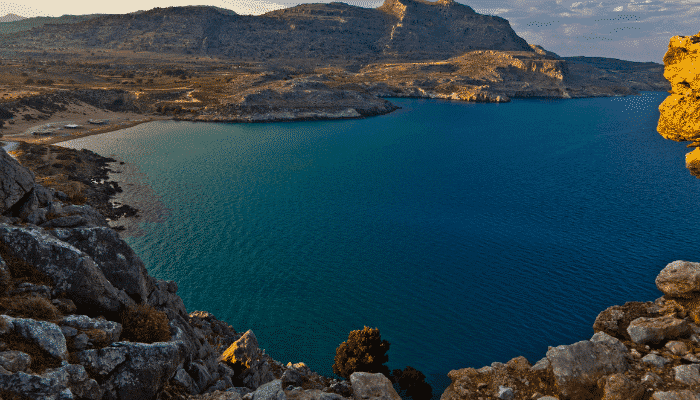

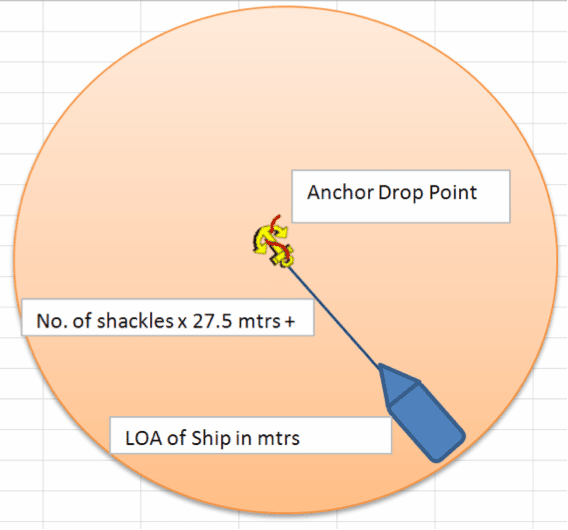






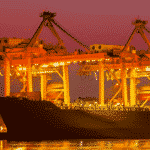








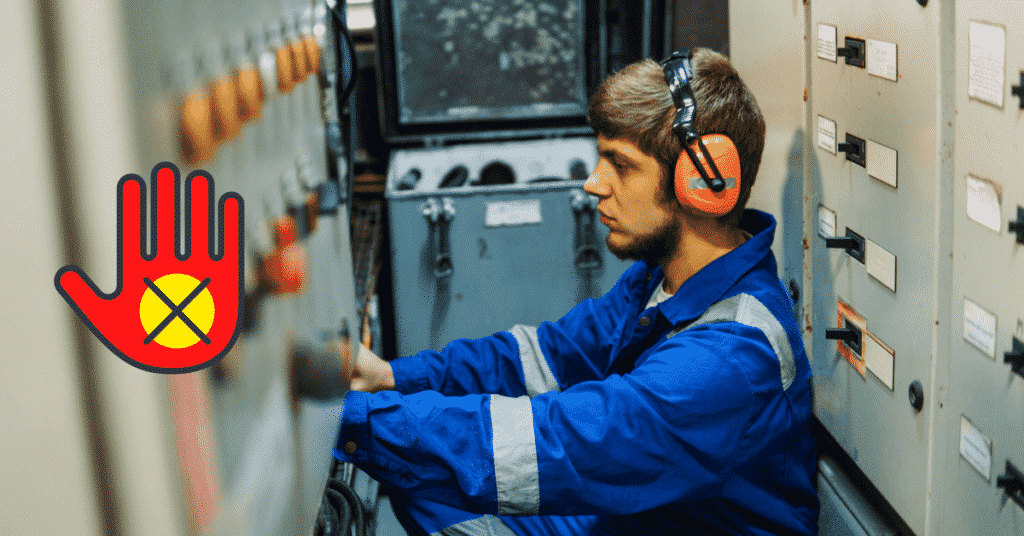

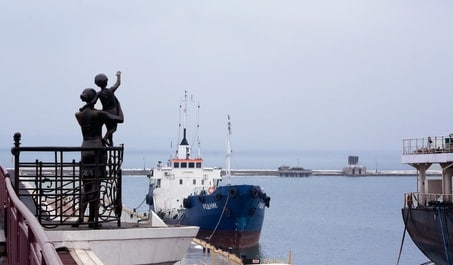
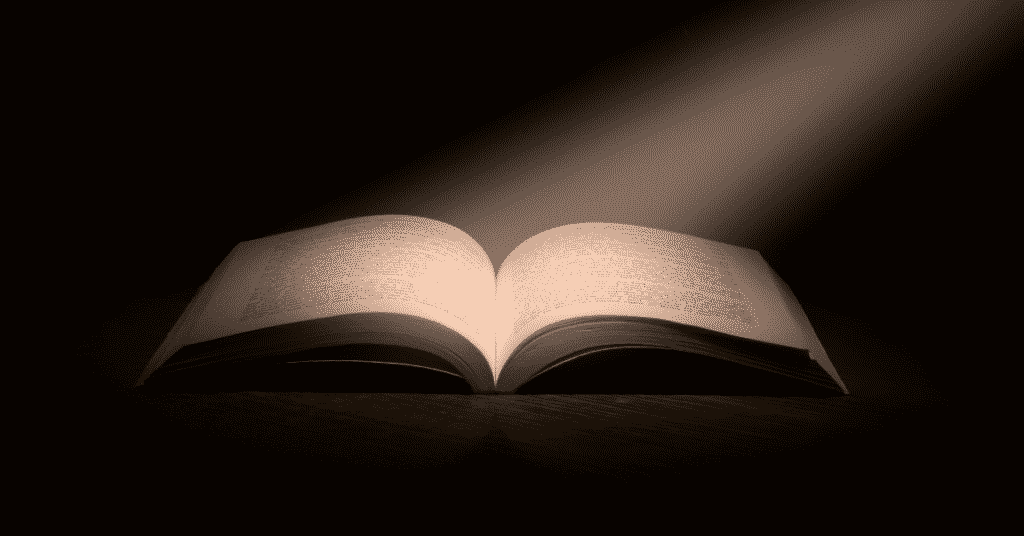

Excellent one. Only suggestion – replace ‘misuse’ with ‘wrongly used’
i knew your father,your’s ago~if mistaken GESCO
I must say this is a very useful article. It has cleared my concept on many aspects.
Thank you.
Well written Nihar,
Congratulations.
Good work and enlightening for the young seafarers.
There are some more e.g. Compass error & Gyro error, Cockspur & Spurling pipe, Accommodation & Superstructure, OWS & ODME, Shackles & Shots etc..
Rgds
Capt. Rajeev Sahai
Hi Nihar,
Respect and admire the effort you put in. Thought I will try an chip in with my two bits.
I am a retired Commander, a Charge Hydrographer of the Indian Navy, Anil Sreedharan and I couldn’t resist the urge to correct the misconception still w.r.t. Gulf & Bays.
The United Nations Convention on the Law of the Seas (UNCLOS) defines Bay in pretty clear and discrete terms which will be a bit arduous to reproduce here in toto so those interested may follow link below to a PDF document and refer to Section 4.2.2 on Page 4 of Chapter 4.
http://www.iho.int/iho_pubs/CB/C-51_Ed4-EN.pdf
And Article 122 of Appendix 2, page 53 defines Gulf as follows:
For the purposes of this Convention, “enclosed or semi-enclosed sea” means a gulf, basin or sea surrounded by two or more States and connected to another sea or the ocean by a narrow outlet or consisting entirely or primarily of the territorial seas and exclusive economic zones of two or more coastal States.
Again these are very loosely, misused nautical terms.
Regards,
Cdr. Anil Sreedharan (IN Retd.)
Very useful article, I should save it
I like it much.
Excellent.
Very usefull for The young oficcers.
These are The beginning point at sea life.
Some of them funny talking when they make These mistakes.
Brilliant article. Very useful. Have to bookmark this one for sure.
I need to show this to the old man onboard. Always mixes up between them swinging and turning circles.
Capt. Rajeev is right. Pls explain super structure and accommodation.
I’s very interesting, but the ship’s terminology is very different and for simple construction sometimes we take different terms. I’s really life.
We spent hours and hours debating the differences between these terms while preparing for our oral exams. I wish this article was published just two months back. Would have been good to save time and helped me pass. Hahahaha.
Glad it was helpful!!:) Do suggest topics you would like to read. Mail us at – info@marineinsight.com
How about “Beam and Abeam”, “Stern and Astern”, “Hatch and Hold”, ” Windlass and Capstan”, “Hitch and Knots”
Do you have any engineering words?
Keep up this kind imformation it helps a lot to new seaferers coming on board a vessel…
plss good day admine.if a crew lost is arms or got an accident during working onboard a ship as an engineer wot should be done to the victim.
Unique and well researched article. Another common mistake guys make is between accomodation ladder, gangway and MoT ladder. Also, ECDIS and Ecs. And finally current and tidal stream. Pls clarify these as well for betterment of crew, cadets and officers.
Sorry. I see accommodation ladder and gangway is already given. But what is MOT ladder?
Good article, 1-2-5-9 are very often mixed up, even in the maritime world. Another good example would be draft and depth. Too many port authorities / agencies / receivers use draft where depth should be used. E.g. ‘Available draft’ is incorrect, should be available depth whereby the master / company can decide what they will consider the maximum safe draft.
Excellent job to refresh shipping terms! Please include South America map!
Found this piece to be useful and interesting. If I may, you could also have included the terms ‘Tidal Streams and Currents’. I’m retired now, but even in my days, we had the occasional ‘experienced’ sea hand referring to the tidal stream in the channel as current. Made my blood boil!
Very good article
Clear concept… in simple words….
liked it..
YOUR COMPANY IS EXCELLENT:- BUT JOB’S FOR SAILER’S ARE DOWN-UNLESS THE P.M. UNDERSTANDS THE lot more FOR INDIAN OCEAN-ARABIAN-BAY OF BENGAL AND our navy is o.k.
ARE RIVERS-NOT VIA BABU’S, MINISTERS, MLA,s, MP’s,-ha ha a dhoti/lungi cm’s….
Very fine post this one. Thank you!
Nice post I love it. I have the passion to be a mariner. I graduated this year 2017 at Regional Maritime University with BSc. Ports and Shipping Administration. but I don’t have any link to join a vessel. I’ll be greatful if i get help.
About the swinging circle – What about the depth ? 😉
Good to know that.Very fine posts.
Thank you for the article.
I think you should add portside and starboard too.
@Sulryman: Glad it is helpful.
@Meysam: I think this is for a Novice and not for a smart seaman 😉
Thank you for your article. It really helped me.
Really very helpful! Thank you for your article.
Thank you for all the ship terms. My husband is going on a boat trip soon and he really wanted to know the different terms about a ship. That is good to know that watertight doors are designed to prevent water ingress from both sides so the ship is not lost. Good to know these doors are located more below deck. I will have to let my husband know.
??
Good Evening
Dear Sir,
The articles are really useful and would like to convey my sincere thanks for the lucid and clear manner in which the various things explained – much much appreciate your efforts.
Can you give some very useful reference for understanding the ship’s routing and also the load zones.
Many thanks in advance
I am so hppy to read this thing nd this will help me a lot not to read more couple of books just check it this thing.thnkuu so much bro?
Very informative.
Collision and Allison should be included.
Turning circle= # of shackles *27.5 + LOA / 1852.
Outstanding effort !!!!
Congratulations Chief Officer.
A quite insightful article. I truly enjoyed reading through. I’m currently doing a bachelor’s degree in shipping and port operations at TUM -Mombasa, Kenya.
@Dzivula: Glad the article is useful. Wishing you luck.
Very informative! Thanks a lot ????✈️????✈️
Windlass and capstand
Sailor and seaman
So grateful for this… It has thrown more light to definitions we carry along while progressing in the profession. Thanks.
????
A fine article. It’s important to maintain the language and terminology. Thank you. I would like a point of clarification though. I first went to sea on a square rigger in the 70’s and have been around a while. From my earliest days I was taught what you mention in the article as a cruciform Bollard, was a cruciform Bit. I was taught Bollards are the same but only located shore side on the quay. Bits on the ship= Bollards on the dock same same for Cleats on a ship, Kevel on the dock. Any similar usage?
thank you for the enlightenment about the different terminologies used in shipping industry.
I have another question, what is the difference of dead ship condition and black out condition.
thank you
5 density and specific gravity applies to all ships and not only to tankers. We must assume that your information is related to liquid cargoes, but is not taking into consideration the sea water which suffer variation from port to port and affect ship’s draft
@John: Blackout condition is the situation where the ship’s power goes out temporarily affecting propulsion plant, boiler, compressor etc. for small period till the emergency generator kicks in and restore the power.
Dead ship condition is similar to blackout condition, however, the emergency backup system also fails and leads to permanent power absence hence called dead ship.
Re: Number 9 – Gangway. Traditionally, gangway is the opening at ship’s side or rail through which one enters or leaves the vessel. The portable walkway that connects the ship to the shore through this gangway is called a brow. More recently the brow and its opening or placement location on the rail are now referred to as gangway. However, the gangway is not limited to 30 degree inclination but rather that to which it has been certified, usually 30 degrees, but it may be 55 degrees. The difference is design. The gangway which is fitted with cleats or duck boards to provide safe footing is usually limited to 30 degree limitation; however, some gangways are fitted with steps much in the same manner as the installed accommodation ladder. In this case the gangway may be certified for 55 degrees. It is therefore important to check the manufacturer’s plate attached to the gangway, or if none is found, the class certificate for the gangway.
Jetties Piers and Wharves oft discussed in our inland waterways world. I loved your article for an insight into the shipping world
Thank you Maggie for your comment.
Thank you Jim for your comment. ??